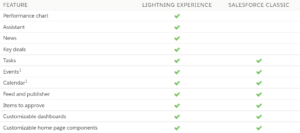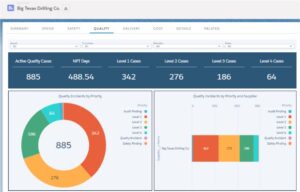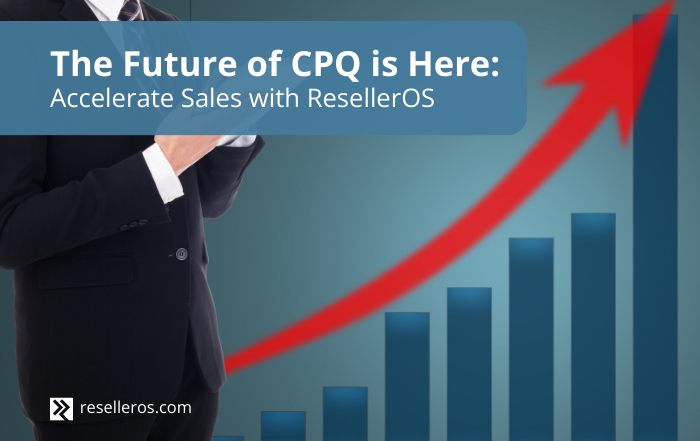What is the Difference between Salesforce Classic and Lightning?
Salesforce has been the top CRM system for B2B sales since the early 2000s, but the launch of Salesforce Lightning in 2016 took its capabilities to the next level, upgrading the tool to align with modern data needs and demand for a better user experience.
While businesses can still use Salesforce Classic for now, Lightning continues to upgrade its capabilities and transition applications to the new platform, making Lightning the more attractive option for businesses newly considering Salesforce and the likely only Salesforce option sometime in the future.
As businesses consider Salesforce Lightning or begin thinking about when they’ll transition from Classic, it’s important to know the key differences between the two.
Lightning Improvements
According to Salesforce Marketing Director Ben Pruden, “Lightning is what we would have originally built if the technology had been available.”
Salesforce Lightning utilizes new technology to bring new functionality, user experience features, and data analytics to make the most powerful aspects of Salesforce — sales data and project management — and put it at the fingertips of every end user.
Better UI
Perhaps the most impactful difference between Salesforce Classic and Lightning is the improvement to the user interface. Lightning offers a sleeker, more customizable user experience that includes several options for workspace page layouts and drag-and-drop capabilities to allow the end user to modify pages without using code or requiring Visualforce support for every small change.
Lightning offers user-friendly tools to help users better manage their workloads. The homepage includes new displayed items like key deals and performance charts, and the Activity Timeline summarizes activity (both past and upcoming) for each lead or account, including who completed which tasks and when as well as details on calls and meetings. The Path component allows for customizable process tracking for everything from the sales process to hiring and onboarding.
Lightning’s component-based framework means that users can build apps more quickly (using 1000+ available components in the AppExchange library) than they could in Classic, and more easily integrate Salesforce with third-party applications.
Overall, Lightning gives end-users the ability to tailor their Salesforce experience to make it most useful to them, with tools, displays, and customization functionality that aims to increase productivity.
Enhanced Einstein Integration
Salesforce Lightning users have access to Einstein Analytics — a serious upgrade to the way users can view and analyze data from Salesforce. Einstein is its own platform separate from but integrated with Salesforce, and it updates automatically every hour, which means users have up-to-date data any time they go to access it.
Einstein’s AI-powered performance analytics make for more intelligent, data-informed sales managers and teams, while their convenience features such as exporting dashboards as pictures and widget faceting make data analysis simple for end users.
Coupled with Lightning’s upgraded Report Builder, which features expanded (add 12 reports to a row vs. 3 in Classic) and more intuitive (drag-and-drop functionality when building reports) capabilities puts data at the center of your sales team’s day-to-day operations.
Security Upgrades
Salesforce Lightning offers Locker Service, an architecture framework that isolates components by namespace and prevents them from interacting with those in other namespaces to safeguard against malicious data intrusion. Salesforce Permissions is also more secure; permissions can’t be adjusted without logging out and back in with higher authentication.
Weighing the Pros and Cons
For potential new Salesforce customers, the choice is a no-brainer: Lightning, with its enhanced capabilities, is the way to go.
For companies who have been using Salesforce for a long time, the decision may be more difficult given the complexity of transitioning your teams to a new platform. Still, there is really only one answer that makes sense, and that’s to transition to Lightning (or at least begin planning for when you will).
Right now, users can still switch back and forth between Classic and Lightning, but in 2019 Salesforce announced that no new features would be released in Salesforce Classic, meaning any new Salesforce developments will be unavailable to users on the Classic platform. And while Salesforce has not indicated a specific time when Classic will become unavailable, it seems inevitable that it will happen at some point as the platform becomes more outdated compared to Lightning.
One commonly cited drawback is that not every Classic application has transferred to Lightning, although the gaps in this regard are being closed by Salesforce over time as they work to make more apps available in Lightning and address those expressed as a priority by users. In the meantime, other expanded capabilities in Lightning often fill those gaps (even if it isn’t through the exact same application) and new apps on the AppExchange (like LEX Ideas by Rainmaker) give users what they need.
Transitioning to Lightning is an adjustment for sure, one that requires companies to plan accordingly to ensure their teams are ready and training processes are in place to make the transition run smoothly — but the anticipated payoff is well worth the effort required.
An economic impact study conducted by Forrester found that companies using Salesforce Lightning were seeing an overall 341% increase in ROI over three years. In a survey conducted by Salesforce, respondents reported a 41% increase in productivity, including a 44% increase in conversion rate and a 23% faster time to close.








